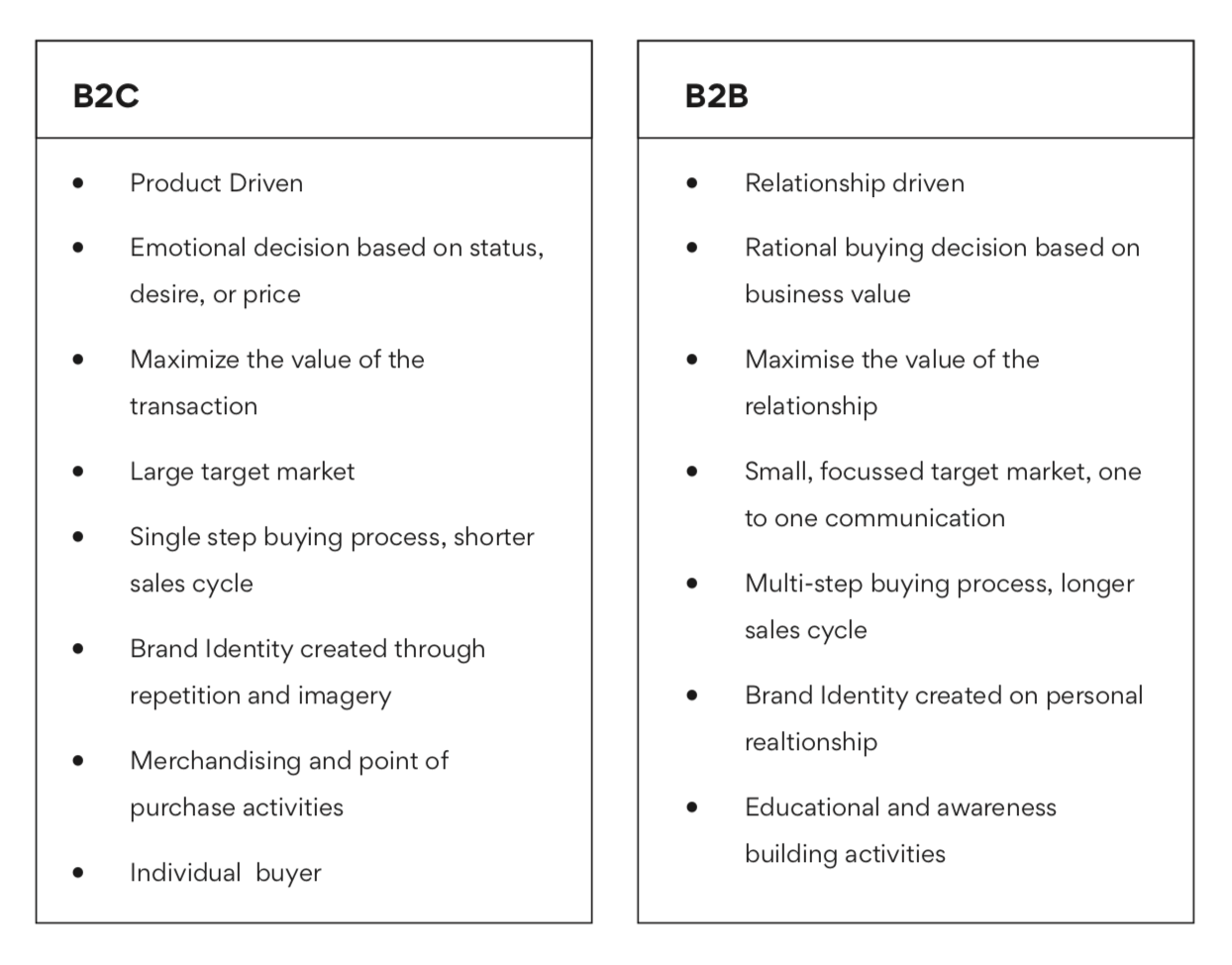eCommerce; The evolution of B2B
eCommerce isn’t just about B2C anymore (or D2C or Consumer selling, call it what you like!). While I have been Managing and building B2C Ecommerce sites for the last 10 years, I have also seen the steady progression of different industries adopting B2C technologies and trading techniques to automate and optimise their business processes – and ultimately improve their profitability.
So many of the features we have come to expect as standard when buying from traditional websites were often not regarded as important for B2B websites – this is no longer the case. If you sell direct to customers, direct to other businesses or both, it is essential you plan out your customers journey and ensure they get access to all the tools they need, and expect, in order to purchase with you seamlessly.
Things you now cannot compromise on for B2B
- Imagery: High quality, Clear, On Brand, Lifestyle – you can’t get away with a rubbish thumbnail image. If you have high quality imagery for end consumers use that for your B2B customers as well.
- Search / Navigation: Your B2B customers will shop in the same way as your B2C customers, so use the same navigational structure and hierarchy. Search will also be a key component, you may need to think about if your B2B customers will be searching by SKU or Partcodes – but the principle is the same.
- Payment Methods: While you may have B2B customers who still pay on credit or Bank transfer – give them the same options as B2C (paypal, Credit card, Apple Pay, Google Pay, Klarna) modern businesses have modern payment requirements!
- Brand Messaging: While your B2B customers may already know you and your business don’t take for granted that they will stay a customer, give them all the same brand messaging and USPs that you would give an end consumer to convert them for the first time. Reinforcing your brand messaging will also encourage your B2B customers to pass on that messaging when reselling your products or services.
- Customer Services: Again, this shouldn’t be any different, regardless of B2B or B2C your customers will expect a Knowledge Base or FAQ section, Email details, Live chat, Telephone details – make it easy for your customers to get the help they need.
Of course, there some subtle areas of the eCommerce shopping experience that have different weightings of importance for a B2B customer vs a B2C customer as detailed in the table below – however you could argue against this and say that the list could be applicable across both customer types.
Should you still have a separate B2B website?
My initial response would be no, because so many of the features you would inevitably have on your B2C website would be applicable to a B2B customer all you are doing is doubling the work by having two separate websites. In an ideal world you have a single site and only have to created products once, merchandise a site once and keep all content consistent.
However, because of the nature of B2B and some legacy B2B customer requirements there may be specific features your B2B customers require that your B2C site doesn’t do, for example;
- Order using Linesheets: Quite a common requirement for B2B customers is the ability to upload a csv file or PDF of SKUs/Partcodes they wish to order (as they may order large quantities and can produce this requisition list from their own system)
- Bespoke Pricing: You may have a huge variety of different B2B tiers that have different prices or discounts and therefore you need to be able to set these price rules specifically for your B2B customers, this could also include simple things like being able to show price ex VAT when on your B2C site prices would be shown Inc VAT. If your B2C platform doesn’t allow for this then a seperate website may be the only option.
- Bespoke Catalogues: You may not want to sell all the products you list on your B2C website to your B2B customers (i.e. keep some items back to be exclusive to you and your customer base). You may also have different available catalogues to different B2B customers – which again may require seperate websites.
- Pay on Account: You may have specific payment terms with some B2B customers, while they will also want the same options as B2C to quick order, they may also be able to buy on payment terms – which is specific to their account (and definitely not a B2C option)
So if this applies to you and your customers you probably already have or are planning to have separate websites.
Can you have B2B and B2C specific experiences within one website
This is the ultimate goal. Being able to keep all the best bits of your B2C site while also having the added specific functionality needed for your B2B customers. All within one website and admin area.
It isn’t easy but it is possible. Across many eCommerce platforms there are ways to have different login credentials and then different experiences and functionality based on the set-up of a particular account holder.
So before embarking on your new B2C/B2B website build, why not get in touch to see if we can help map out and plan your new eCommerce platform!
Check out a few of our recent B2B eCommerce Projects.
Collingwood Lighting: https://sotechnology.co.uk/work/collingwood-lighting/
Salvo 1968: https://sotechnology.co.uk/work/salvo-1968/
The New Craftsmen: https://sotechnology.co.uk/work/the-new-craftsmen/
We will be following up this article with some more detail of which eCommerce platforms are the best for combining your B2C / B2B business so stay tuned.
Thanks
Mark Purdy, Managing Director, @SO Technology
